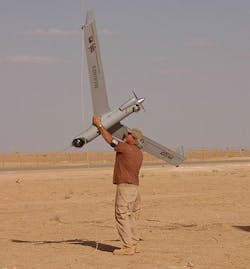Special Operations Command looks to Insitu and ScanEagle UAV for 24/7 ISR contract services
MacDILL AIR FORCE BASE, Fla., 8 Feb. 2013. Officials of U.S. Special Operations Command at MacDill Air Force Base, Fla., needed intelligence, surveillance and reconnaissance (ISR) support under the Mid-Endurance Unmanned Aircraft System (MEUAS) ISR service program. They found their solution from Insitu Inc. in Bingen, Wash.
Special Operations Command awarded Insitu a potential $1.9 million contract Wednesday, with a minimum value of $1 million, to provide ISR support for slightly more than two years. Insitu, a Boeing Co. subsidiary, provides the ISR services with its ScanEagle unmanned aerial vehicle (UAV) and UAV sensor payloads.
Insitu will provide 24/7 ISR services support, including planning, coordination, certification, installation, pre-deployment, deployment, logistics, maintenance, flying, and post-deployment efforts necessary to conduct worldwide missions.
The company will provide near-real-time ISR feed from 300 to 900 hours per site monthly into Special Operations Command processing systems from world-wide locations.
The ScanEagle UAV, 4.5 feet long with a wingspan of 10.2 feet, launches autonomously and uses a no-nets recovery system that recovers with its wing tip on a rope that hangs from a boom.
The ScanEagle UAV can fly for as long as 24 hours between refueling, cruises at 48 knots, has a maximum speed of 80 knots, and can fly as high as 19,500 feet above sea level. It uses a 1.9-horsepower 2-stroke gasoline engine, and navigates with a GPS and inertial measurement unit.
The UAV can carry electro-optic (EO) or long-wave infrared (LWIR) imaging sensors, a mid-wave infrared imager (MWIR) for daylight-quality infrared imagery. A dual-bay option can carry EO and LWIR imagers at once.
A dual-spectrum payload featuring MWIR and EO cameras in one turret is in field trials. Imagers mount to turrets that are gimbaled and inertially stabilized.
Imaging sensors will enable Special Operations Command experts to see wide areas and close-ups simultaneously by combining a high-resolution electro-optical telescope with the electro-optical camera.
For more information contact Insitu online at www.insitu.com, or Special Operations Command at www.socom.mil.

